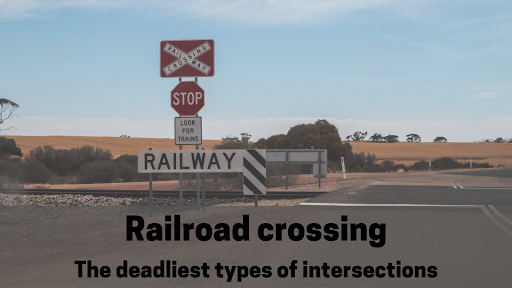Railroad crossing: The deadliest types of intersections
The dangers of railroad crossings are well known and frequently unavoidable. There are nearly 2,000 fatalities and tens of thousands of injuries from these crossings every year. While most of these accidents occur in rural areas, many urban crossings also pose hazards. The National Transportation Safety Board has identified railroad crossings as one of the top 10 causes of rail-related accidents.
In addition to the danger posed by trains, these intersections also have a higher collision rate due to the typical layout. Cars traveling perpendicular to the tracks often have difficulty seeing oncoming trains, leading to disastrous consequences.
The typical intersection collision settlements at railroad crossings can be quite high if you are hurt in an intersection wreck. The driver or passengers in the hit car will file a lawsuit against the railroad company in many cases. These lawsuits often result in large payouts for those affected by accident.
How to use a railroad crossing
When approaching a railroad crossing, you should slow down and look in both directions before proceeding, even if there doesn’t appear to be any traffic. It is important to know the signals at the crossing, so you don’t get caught in a dangerous situation. Follow these simple steps to use a railroad crossing safely:
- Look for the green signal light. It means the train is stopped, and you can cross.
- If the light is red, stop immediately and do not cross the tracks. It is against the law to pass a stopped train.
- If you feel it’s safe to cross the tracks, do so at a 90-degree angle and proceed with caution until you reach the other side.
Another thing is that not all crossings have gates or flashing lights. If you find yourself at one of these crossings, use caution and look both ways for trains before proceeding. Remember, a train can take up to a mile to stop, so it’s always best to play it safe and wait until the tracks are clear before crossing.
If you’re involved in a collision at a railroad crossing, it’s important to know your rights. In most cases, the car driver will be held liable for damages caused by the accident.
Types of railroad crossings
Railroads are a vital part of our economy, transporting goods and people. There are three types of railroad crossings: public, private, and pedestrian.
Public crossings
Public crossings are the most common type of railroad crossing. They are found at intersections where a highway crosses a rail line. The Federal Highway Administration estimates over 10,000 public crossings in the United States. These crossings can be found in all environments, from rural areas to major metropolitan areas.
There are two main types of public crossings: grade crossings and at-grade crossings. A grade crossing is where two rail lines cross at an elevated location above the ground. An at-grade crossing is where the two rail lines run alongside each other on the ground. Public crossings can be dangerous if they are not properly maintained.
Private crossings
Private crossings are important for businesses and industries that need to access their property. These can be used for various reasons, such as providing access to warehouses or factories or connecting different parts of a property. Private crossings can also be used for transportation by linking a highway to a private driveway.
This type of crossing is often less expensive than public crossings and can be customized to meet the needs of the individual business or industry.
Pedestrian crossings
Pedestrian crossings are important for people who live near railroad tracks or work on the railroad. These crossings help reduce accidents and make it easier for pedestrians to get where they need to go. People who use pedestrian crossings should know about the different types of crossings and how to use them. Pedestrian crossings can be either continuous or signalized. Continuous crossings don’t have a traffic light, but they have a green signal. Signalized crossings have a traffic light that you need to obey when crossing the street. Ideally, a pedestrian crossing should have a flashing light, and it should have a sign that says “Crossing.
Conclusion
Railroad crossings are one of the most dangerous types of intersections. Each year, dozens of people are killed at crossings, and thousands more are injured. Many of these accidents happen because drivers don’t know how to cross the tracks safely. Stay well away from the tracks. Don’t cross them when they’re in your view, even if the traffic moves. And watch for warning signs.
We hope you enjoyed this article. Stay tuned and stay safe.



